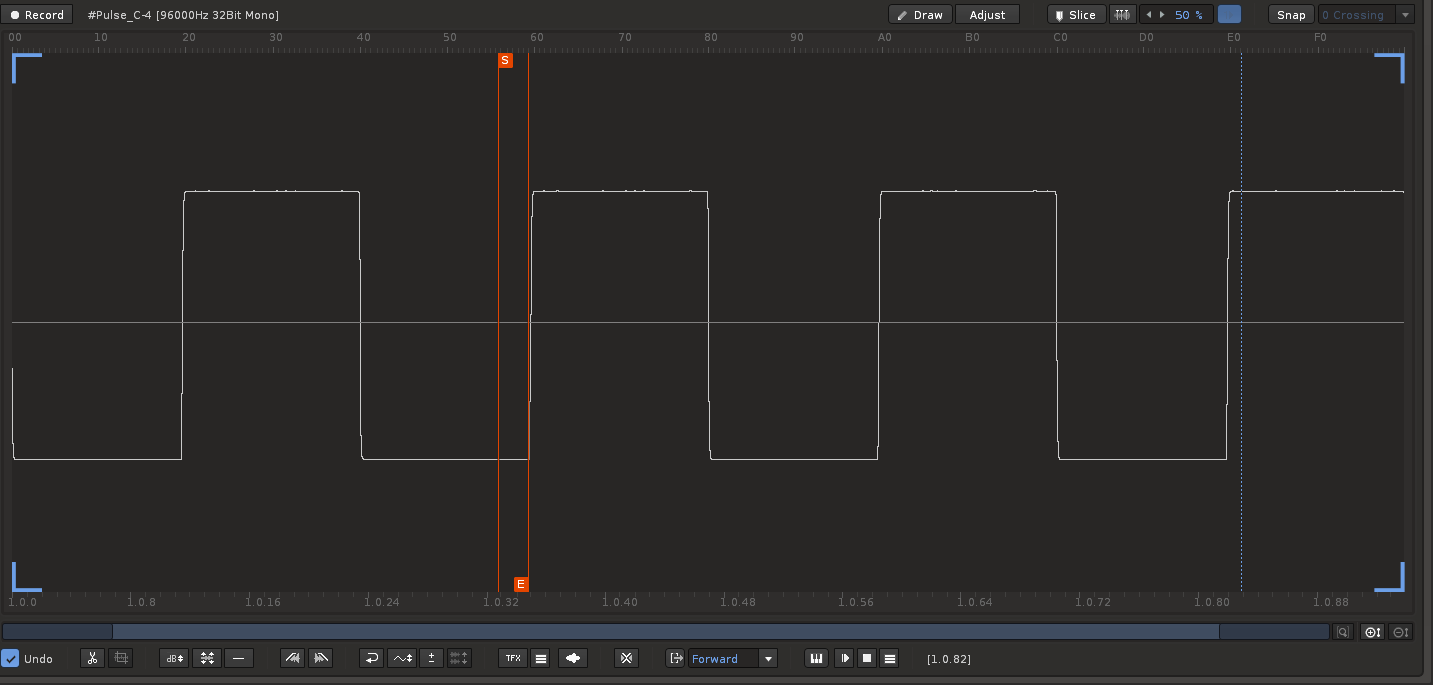As the title says, I don’t really get the difference between wavetable synthesis and granular synthesis with only one grain, like in the polyend tracker - which has both wavetable and granular (with one grain).
I think that granular shines when you use multiple grains all over the sample and automate their positions, that makes for some intriguing pads. But what if its limited to one grain? Isn’t it basically the same as wavetable synthesis with automated wavetable position?
This reddit post is pretty good at explaining it.
Wavetables: based on a single-cycle waveform taken from a specific part of a sample. It’s a way of generating more complex waveforms than saw/square/sine. The “table” part comes in when you take several single-cycle waveforms from different parts of a single sample and then switch between them. They generally sound nothing like the original sample though. Like picking several colors from individual pixels of a photograph and then painting something with those colors.
Granular: instead of using a single-cycle waveform, you use very short “splices” of a sample, but play a bunch of them at once (randomly) so that they overlap. Like chopping up a photograph into 1000 bits of confetti and then rearranging them to make a picture of your dog.
The biggest difference between both is wavetable has multiple waves/sound samples while granular uses only one.
Thanks for the explanation!
What about granular with only one grain though? Is the difference that a grain is bigger than a single-cycle-wave?
Typically a single grain is a segment of a soundwave. A single grain can be defined by the size of it, the offset where it starts in the soundwave, and looping function. Take a instance of this screenshot and pretend the S and E markers of a Renoise instrument sample is a grain.

Wavetable is like a static oscillator - the same waveform repeated at the base frequency, no overlap. Morph means that the shape is changed while it is repeated over and over, and pitching means to alter the frequency at which the shape is repeated.
Granular means having a little bit of sound (a grain, often longer than a cycle, and can also be a cycle waveform!) - either always the same, or different parts from a big wave…and this little bit is being mixed together with (often chaotically), sometimes time- or pitch/frequency-shifted or in other ways manipulated grains, most often overlapping a lot. How long they can be can be varying. Imagine it like having a little sharp click, and mixing it together with randomly placed other clicks so there comes noise out of it, that sounds different depending on how dense the clicks are placed and how they are pitched before mixing together. To pitch it the grains must have some tonal qualities and be tuned correctly.
Thanks for your answers! It’s not easy for me to wrap my head around this. I have to think about it.
Thanks again for your help!